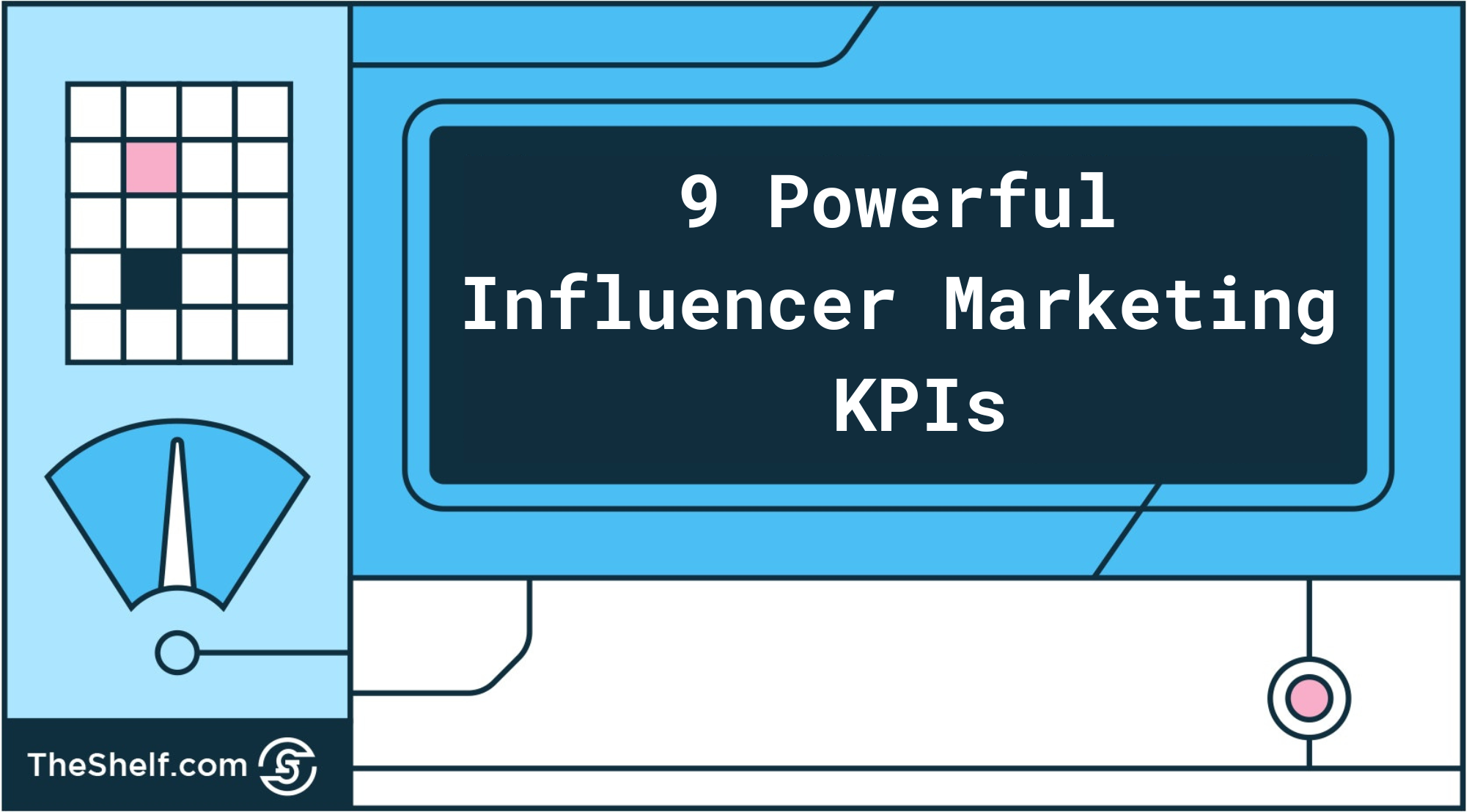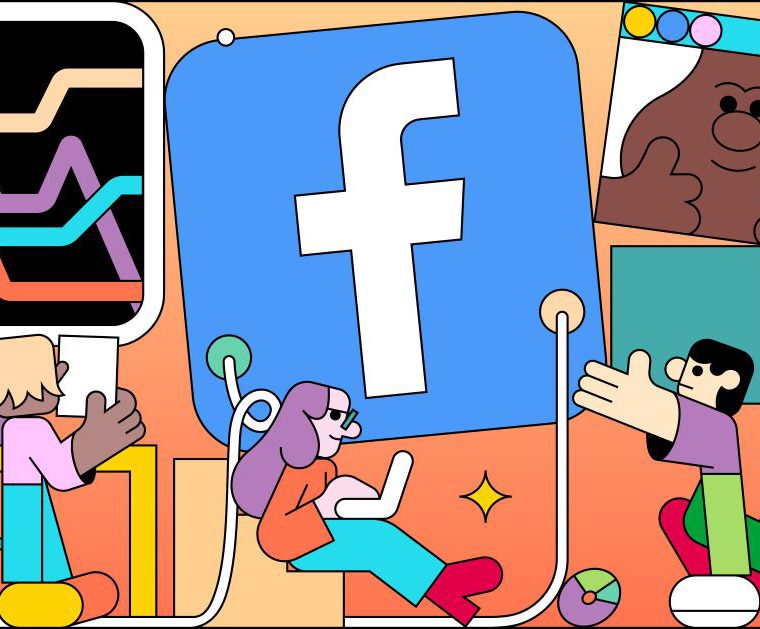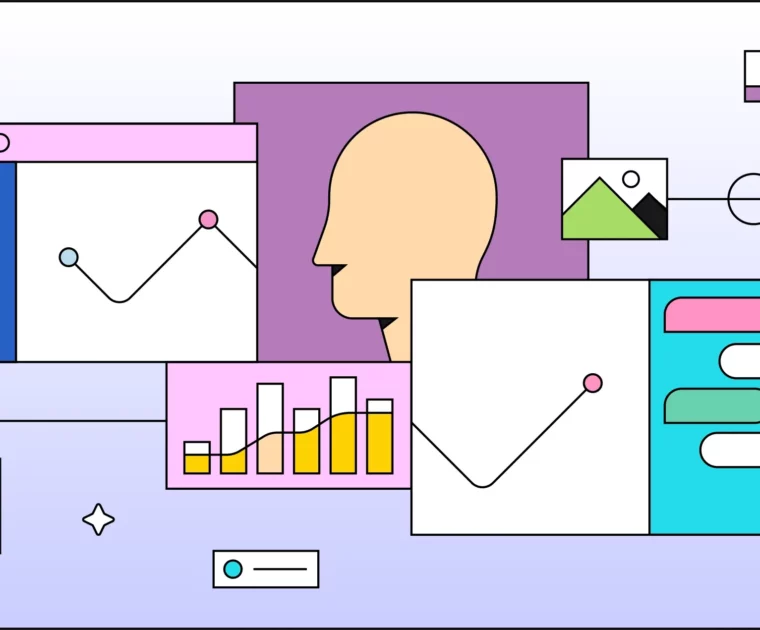You’ve scheduled a post, written the caption, and hit publish. But will your influencer marketing campaign be successful? The answer lies in your KPIs (key performance indicators). This goes beyond likes, comments, and shares. To truly gauge the success of your influencer campaign, you need to look at influencer marketing KPIs.
Did you know there are dozens of KPIs influencer marketing uses? You can use them to measure the effectiveness of your influencer marketing campaigns. No matter what type of campaign you’re running, or what industry you’re in, there’s a KPI that will help you gauge its success.
In this super-duper-ultra-valuable listicle, we’ll outline some of the most powerful KPIs for influencer marketing campaign performance. We’ll also provide tips on how to track them effectively. You’ll learn everything you need to know to start tracking and monitoring your campaigns’ success.
What Are the KPIs for Influencer Marketing?
Before we dive in, let’s quickly review what influencer KPIs are, and why they’re important. An influencer marketing KPI is a way to measure and track the success of your company’s various marketing channels. They help you make decisions about which areas need more attention, as well as whether or not they’re performing at an acceptable level compared to other companies within similar industries.
A key performance indicator (KPI) may be defined simply: It Indicates how well your campaign is going. But these numbers can also show us if there’s anything that needs fixing so we know how to improve.
1. Engagement Rate
Engagement rate is an important influencer marketing KPI. The engagement rate is the number of people who engage with your content divided by the number of people who see it. Engagement can include likes, comments, shares, and clicks. This KPI measures how well your content is performing and how interested your audience is in it.
Establishing and maintaining engagement with your audience is key to the success of any brand. It builds relationships, relevance, and loyalty among customers while also being a good barometer for how well-received your content is.
You’ll want to confirm that you’re speaking to your ideal demographic and that they are engaged with what you have to say. People who engage with your content demonstrate that they not only see your content but also find it interesting. This means they want others to know about you too. A high engagement rate is proof of the success of your brand.
Maintaining a good engagement rate on social media is vital for any business, and most experts agree that this percentage should fall between one to five percent. The number of the influencer’s followers doesn’t matter as much as the quality of your content.
When seeking out potential influencers to collaborate with, always consider both their engagement rate and reach. An influencer whose followers are fewer in number but highly engaged will be more effective for promoting your brand than one whose following is large but uninvolved.
To improve this influencer marketing KPI, be sure to post content with strong visuals, an interesting headline, and a call to action. Also, consider the time of day you’re posting. Experiment with different times and see when you get the most engagement.
ProTip: Geotagged Instagram posts see 79 percent more engagement than those without location tagging.
2. Reach
Influencer reach is their total number of followers, AKA the number of people you could potentially engage with your content. Reach can be measured for individual pieces of content or your overall account. Reach is a good way to measure the potential impact of your content and to see how far it is spreading.
To be successful, you should track how many people were reached with your campaign and whether any new prospects became aware of the brand as a result. You can also look at your last campaign to determine context for success or failure in comparison to previous efforts.
Improving this influencer marketing KPI could be as simple as working with influencers who have a large social media following. Again, don’t forget that influencer quality is more important than quantity. The goal is to create brand advocates.
Always focus on creating high-quality content that’s shareable and interesting so that people will want to spread the word about your brand.
Instagram may be the way to go if you’re looking to increase reach. In terms of paid social media reach, Instagram is currently outpacing Facebook. Facebook’s global advertising only grew by 6.5 percent this year, whereas Instagram more than tripled that at a 20.5 percent increase.
Another easy way to expand reach is to post at the right times. By scheduling your social media content to post during the most active times of day for each specific network, you’re much more likely to engage with your followers.
3. Impressions
Reach and impressions are sometimes confused, but these KPIs for influencer marketing are not as similar as they seem. The total number of people who see your content is classified as reach, while impressions are the number of times your content is displayed (with or without engagement).
Every time a user views one of your posts, it is counted as an impression. So if the same user views one post three times, that would count as three Impressions and one reach. If you have a higher Instagram impression rate than reach, it means people are watching your content multiple times!
The way different social platforms count impressions and reach can vary, so be sure to analyze your results from different social media platforms carefully as there can be subtle variations when measuring this influencer marketing KPI.
Impressions can be measured for individual pieces of content or your overall account. This is a good way to measure how often your content is being seen and to track its reach over time.
Impressions data can be used to understand how often people are seeing your content, which can help you make decisions about frequency and budget, and increase your brand’s visibility.
4. Conversions
Conversions are the number of times people take the desired action after seeing your content. They can be anything from signing up for a newsletter to making a purchase. Conversions are a good way to measure how effective your content is at achieving your goals.
By utilizing influencer marketing, you can greatly expand your potential customer base by growing a follower list of people who might buy from you down the line. However, an influencer KPI that shouldn’t be overlooked is conversion rates — how many leads are we getting each month and closing?
Conversions are one of the most useful KPIs for influencer marketing because they measure how effective influencers are at driving people to take the desired action. 42.3 percent of brands determine the success of an influencer marketing campaign by measuring conversions and sales.
There are a few ways to make sure that your campaign smashes your conversion goals. First, influencers should be as relevant to your brand as possible. Their audience should also be highly skilled at creating content that doesn’t distract from the CTA. This keeps followers engaged and focused, which means they’re more likely to take the desired action.
It’s also important to make sure that your influencer’s call to action is clear and concise. The more specific you can be, the better. Campaigns with a clear, personalized call-to-action convert more than twice as well as those without one.
If you’re directing your audience to a website, ensuring that it’s mobile-optimized is key. About 60 percent of internet traffic now comes from mobile devices. Make sure that your website loads quickly and that buttons and links are easy to find and click on a small screen.
5. Sentiment
In influencer marketing, sentiment means the emotion that an influencer’s posts evoke in their audience. A high sentiment score means that the influencer’s posts mostly create positive, enthusiastic emotions in their audiences like happiness, approval, or satisfaction.
A low sentiment score is a very telling influencer marketing KPI. It means that the influencer’s posts are mostly negative and evoke sad, angry, or frustrated emotions in their audience. Neutral sentiment is associated with things that are neither good nor bad, like facts or statements of opinion.
Sentiment exists whether your audience is online or offline. High inflation and gas prices caused the consumer sentiment index to drop from 58.4 in May 2022 to 50.2 in June 2022, which is the lowest level on record since November 1952.
It’s important to track sentiment because it can be a good indicator of the overall tone and relationship that an influencer has with their audience. Monitoring this metric also allows you to measure public opinion, offer a better customer experience, and if the need arises, quickly spring into damage control mode.
Some drawbacks to sentiment analysis exist. It’s difficult for AI and algorithms to determine the tone of the text it’s trying to analyze. Misspellings, sarcasm, punctuation, and even emojis can cause problems for sentiment analysis. Contrastive conjunctions can also complicate analysis. This is when two different sentiments are given in the same statement like “Standing in the long line was horrible, but I loved riding Splash Mountain.”
6. Referral Traffic
The next influencer marketing KPI on our list is referral traffic. Referral traffic measures the number of visitors that come to your website from an influencer’s blog or social media profile.
Referral traffic is a valuable metric because it shows you how effectively an influencer is driving users to your website. If an influencer has a large amount of referral traffic, it’s a good indication that their followers are interested in what you have to offer.
To track referral traffic from influencers, you can use Google Analytics. Simply set up a campaign tracking code for each influencer and then check the Referrals report to see how much traffic they’re sending your way. Google has announced that Universal Analytics will no longer process new data in standard properties beginning July 1, 2023. It is advising all users to switch over to Google Analytics 4 as soon as possible.
Over the last few years, Google has worked hard to improve the search experience for users. This includes returning more accurate and relevant results, as well as getting rid of any intermediaries who use techniques that try to cheat the system. As a result, organic search traffic is up. Still, it only accounts for 53 percent of traffic. This means there are still endless opportunities for influencers to help you reach your target audience.
7. ROI (Return On Investment)
ROI is a measure of how much money you make from an influencer campaign compared to how much you spend. For example, if you spend $1,000 on an influencer campaign and it generates $10,000 in sales, your ROI would be 10X or 1,000 percent.
ROI or return on investment is an important metric because it allows you to see how effective your influencer campaign is at driving revenue. If you’re not seeing a good ROI from your influencer campaigns, it’s time to reassess your strategy.
You can also use ROI to compare the performance of different influencer campaigns. For example, if you have two influencers with similar numbers of followers, but one has a higher ROI than the other, you know which influencer is more effective and worth working with again in the future.
Influencer marketing currently gives you the best ROI of all digital marketing channels.
If you’re like the 28.1 percent of brands that run campaigns in-house, you feel that measuring campaign results can be a daunting task, but have no fear! The Shelf is here to help you navigate the ins and outs of your influencer campaign KPIs.
8. CTR (Click-Through Rate)
CTR compares the number of clicks an online ad receives to its number of impressions, or how often the ad was seen.
Click-through rates (CTRs) are an important part of pay-per-click (PPC) campaigns. A high CTR is an indication that your influencer’s followers are interested in what you have to offer and are more likely to convert into customers because the content was relevant enough to keep them engaged throughout the entire process.
On TikTok, the CTR for Take-Over ads hovers between seven and ten percent, and TopView ads skyrocket CTRs up to 16 percent. This means that the platform’s audience is usually active and responsive, which is excellent news for brands trying to promote their content.
Measuring your click-through rate is simple. Divide the number of clicks your ad received by the number of times it was seen, or the number of impressions. For example, if your ad was seen 10,000 times and received 100 clicks, your CTR would be one percent.
LocaliQ just released their 2022 Search Advertising Benchmarks for Every Industry Report. Quite a few of the industries it analyzed saw a very high average CTR. Arts and entertainment sit at 11.43 percent and travel at 9.19 percent. That’s a big deal because the average CTR for Google Ads is 3.17 percent.
Every industry listed not only outperforms that data but puts the average across all industries in the six to seven percent range. Keep in mind though the data includes both Google Ads and Bing Ads, which could also account for higher CTRs. Need more inspiration? Read about how we got this smart lighting company over 3.5 times higher CTR than the industry standard will help tip the scales. We don’t mean to toot our own horn, but um… 🔉Beep Beep! 🔉
9. CPC (Cost-Per-Click)
CPC measures how much it costs to get someone to click on an influencer’s post. The advertiser pays the publisher each time an ad is clicked. The Cost-Per-Click is determined by taking the overall cost of your clicks and dividing it between the total number of clicks. Your average CPC will depend on your actual cost-per-click.
This metric shouldn’t be taken lightly. Marketers should take CPC into account, as it indicates how much a brand pays for its paid advertising campaigns. Marketers’ goals should be to reduce the cost per click while simultaneously increasing clicks from high-quality prospects/patrons.
The average amount paid for each click on an ad is known as CPC. A high number of clicks or visits to an ad indicates that the audience is interested in the product or service.
So, How does CPC work? Great question! The cost-per-click of an ad on a website or popular keyword is determined by how much advertisers are willing to pay for that placement. The more demand there is for a particular keyword in the auction, and the better the ad placement (such as appearing higher up on a webpage), the higher those costs will be.
The smaller the number, the better! When a brand has a low CPC, it means that its ads are high-value but relatively cheap. A perfect example of this is when we achieved a CPC of $0.14 for a global footwear retailer. Is this a big deal? Nah. It’s HUGE. Especially when you consider that the average CPC in the apparel/fashion industry is $2.66. 📢📢📢
Are You Ready To Have Your Mind Blown?
After reading this ridiculously valuable listicle, you now know nine influencer marketing KPIs that are essential to measuring the success of your influencer campaigns. Fully maximizing these Powerful Influencer Marketing KPIs is the only thing that stands between you, and the success of your campaign. By understanding and utilizing these KPIs, you can fine-tune your influencer marketing strategy to ensure that it is as effective as possible.
This is a lot to take in. We get it, and we’re here to help. Our team of marketing geeks, ninjas, geniuses, and wizards (yes, there are levels to this) can help you develop and implement an influencer marketing strategy that is tailored to your specific needs and goals. Book a strategy call, and let us wow you with our mad influencer marketing skills!

About This Author
Lira Stone | Effective, Magnetic Strategist
For over a decade, my focus has been ensuring that professionals stay ahead of the curve in the most time-efficient, task-prioritized, and stress-free manner possible. My extensive experience has equipped me with the knowledge to design a concise, company-culture-relevant, methodical approach to internet sales and marketing.







